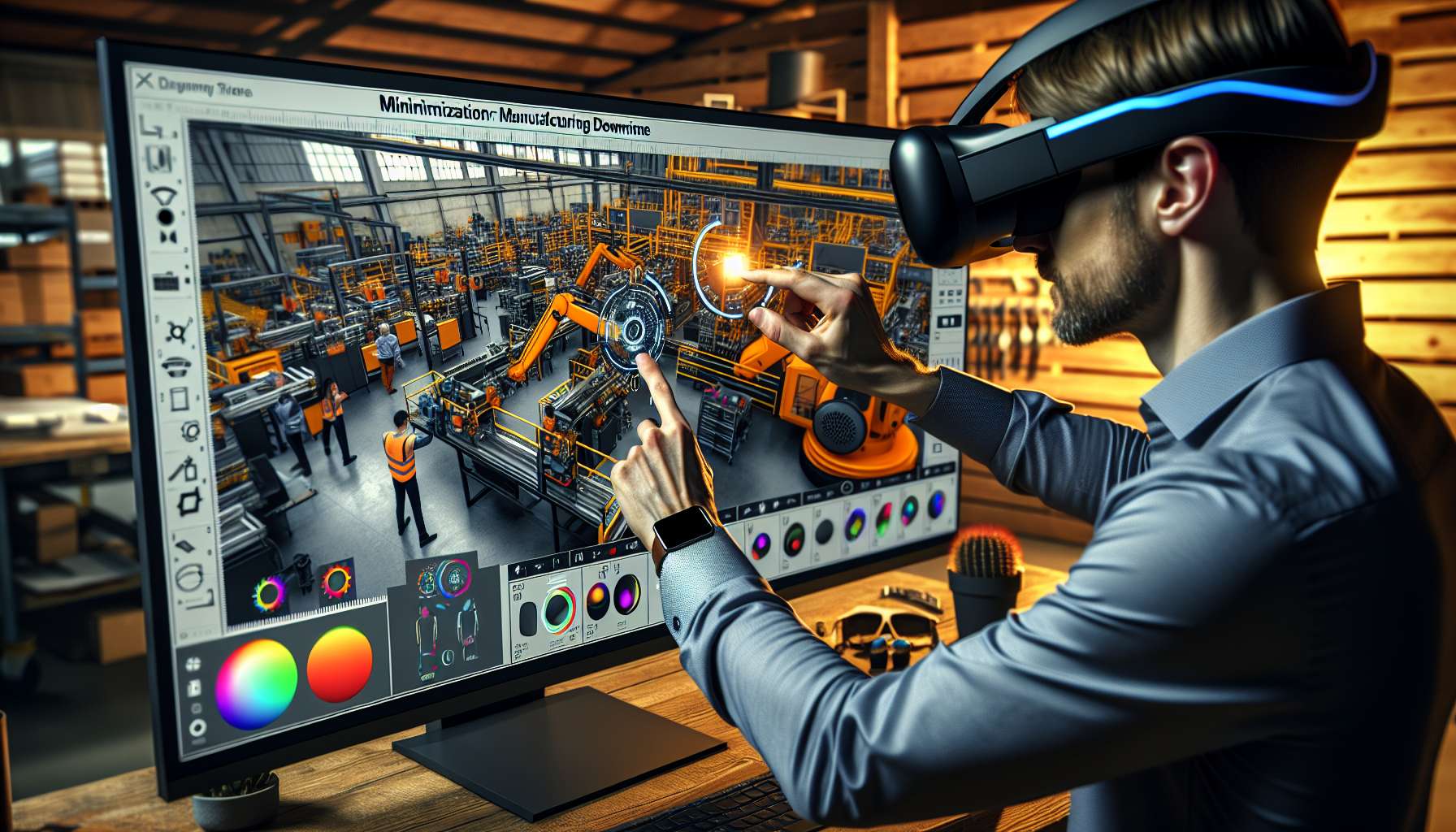The Power of Augmented Reality in Minimizing Manufacturing Downtime
Manufacturing operations are the backbone of any industry, and minimizing downtime is crucial for maintaining productivity and profitability. In recent years, augmented reality (AR) has emerged as a game-changing technology that can significantly reduce downtime in manufacturing operations. By seamlessly blending the physical and digital worlds, AR empowers workers with real-time information, enhances their decision-making capabilities, and streamlines complex processes.
Understanding the Challenge
Downtime in manufacturing operations can occur due to various reasons, such as equipment breakdowns, maintenance tasks, or human errors. Regardless of the cause, downtime leads to lost production time, increased costs, and decreased customer satisfaction. Traditional approaches to reducing downtime often involve manual inspections, troubleshooting, and time-consuming repairs. However, these methods are not only labor-intensive but also prone to errors and delays.
The Role of Augmented Reality
Augmented reality offers a transformative solution to minimize downtime in manufacturing operations. By overlaying digital information onto the physical environment, AR provides workers with real-time insights, step-by-step instructions, and remote expert assistance. This technology enables operators to quickly identify and resolve issues, reducing the time required for troubleshooting and repairs.
Real-Time Data Visualization
AR allows workers to visualize real-time data, such as equipment performance metrics, maintenance schedules, and inventory levels, directly in their field of view. With this information readily available, operators can proactively identify potential issues and take preventive measures before they escalate into downtime-causing problems. By leveraging AR, manufacturers can optimize their maintenance processes, ensuring that equipment is serviced at the right time, reducing the risk of unexpected breakdowns.
Guided Instructions and Training
AR-based instructions and training modules provide workers with step-by-step guidance for complex tasks, such as equipment setup, maintenance procedures, or troubleshooting. By overlaying digital annotations and animations onto physical objects, AR simplifies complex processes, reduces human errors, and accelerates learning curves. This technology empowers both experienced and novice workers to perform tasks efficiently and accurately, minimizing the risk of downtime due to incorrect procedures.
Remote Expert Support
AR enables remote experts to provide real-time guidance and support to on-site workers. By using AR-enabled devices, such as smart glasses or tablets, operators can share their field of view with experts located anywhere in the world. Experts can then overlay instructions, diagrams, or annotations onto the live video feed, guiding operators through complex tasks. This remote assistance capability not only reduces the need for travel but also ensures that workers have access to expert knowledge, minimizing downtime caused by waiting for on-site support.
Real-World Success Stories
Several companies have already embraced AR to minimize downtime and improve their manufacturing operations. For example, a leading automotive manufacturer implemented AR-based maintenance instructions, resulting in a 30% reduction in equipment downtime and a 90% decrease in training time for new technicians. Another industrial equipment manufacturer utilized AR to provide remote expert support, reducing the average downtime per incident by 50% and saving significant costs associated with on-site visits.
The Future of AR in Manufacturing
The potential of AR in minimizing downtime goes beyond the current applications. As the technology continues to evolve, we can expect even more advanced features, such as predictive maintenance algorithms, real-time performance analytics, and AI-powered anomaly detection. These advancements will further empower manufacturers to proactively address downtime-causing issues, optimize their operations, and achieve new levels of efficiency.
Conclusion
Augmented reality is revolutionizing the manufacturing industry by minimizing downtime and maximizing productivity. By providing real-time data visualization, guided instructions, and remote expert support, AR empowers workers to make informed decisions, perform tasks accurately, and resolve issues efficiently. As more companies recognize the potential of AR, we can expect to see widespread adoption and further advancements in this transformative technology. Embracing AR is not just about reducing downtime; it’s about unlocking the full potential of manufacturing operations and driving business success.





